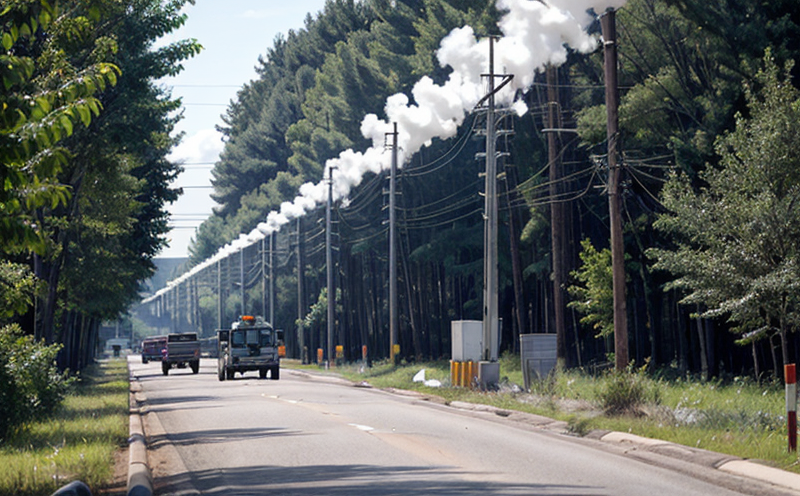EPA Method 7E NOx Emission Testing in Utility Facilities
Environmental and emission compliance testing is critical in ensuring that utility facilities operate within regulatory standards. Among these tests, EPA Method 7E for nitrogen oxides (NOx) emissions plays a pivotal role in evaluating the environmental impact of various power generation plants, including coal-fired boilers, natural gas turbines, and other industrial combustion sources.
The National Emission Standards for Hazardous Air Pollutants (NESHAP) under Title IV of the Clean Air Act requires utilities to monitor NOx emissions. EPA Method 7E provides a standardized protocol for collecting and analyzing these emissions, ensuring consistency across different facilities.
The testing process involves several key steps: sample collection using specific sampling trains, transport to the laboratory under controlled conditions, and subsequent analysis of the samples. This method is designed to measure NOx in ambient air or stack gas at utility facilities accurately.
The accuracy and reliability of EPA Method 7E are paramount for compliance. The testing protocol must adhere strictly to the method's detailed guidelines, which include:
- Use of proper sampling trains
- Controlled transport conditions (temperature, humidity)
- Calibration of instruments using certified reference materials
- Analysis with a chemiluminescence analyzer
The goal is to ensure that the results are repeatable and reproducible, which is essential for regulatory compliance. This method's precision allows utilities to identify areas where emissions can be reduced, thereby contributing to cleaner air.
Applied Standards:
| Standard | Description |
|---|---|
| EPA Method 7E | Chemiluminescence method for the determination of nitrogen oxides in ambient air and stack gas. |
| ASTM D5640 | Standard test methods for sampling and analysis of gaseous emissions from stationary sources. |
| ISO 19783-2 | Determination of nitrogen oxides in ambient air by chemiluminescence method. |
The use of these standards ensures that the testing process is consistent and meets international quality benchmarks. Compliance officers, R&D engineers, and procurement teams can rely on this standardized approach to ensure accurate data collection and analysis.
Scope and Methodology
EPA Method 7E NOx emission testing involves a series of steps designed to collect representative samples of NOx emissions from utility facilities. The primary objective is to measure the total nitrogen oxides present in stack gas or ambient air, which are then analyzed for compliance with environmental regulations.
The method's scope includes:
- Sampling: Utilizing a sampling train consisting of a sample inlet, sampler, and condenser to collect NOx from the exhaust stack.
- Transportation: Maintaining controlled conditions during transport to ensure that the samples remain representative.
- Analysis: Using a chemiluminescence analyzer to measure the concentration of NOx.
- Data Reporting: Providing detailed reports on the measured emissions, including averages and variances.
The methodology is stringent, ensuring that the results are accurate and reliable. The use of chemiluminescence analyzers provides high precision, allowing for sensitive detection of even low concentrations of NOx.
Compliance officers can use this testing method to ensure that their utility facilities meet regulatory requirements. By adhering to EPA Method 7E, they can demonstrate compliance and reduce the risk of penalties.
International Acceptance and Recognition
- EPA Method 7E is widely accepted in the United States for NOx emissions testing.
- The method's precision and accuracy have been recognized by international standards organizations such as ISO and ASTM.
EPA Method 7E has gained widespread recognition due to its reliability and consistency. The use of this method is not only mandatory in the U.S. but also recommended for utilities worldwide seeking to ensure environmental compliance.
Many countries have adopted similar methodologies, such as ISO 19783-2, which aligns closely with EPA Method 7E. This alignment ensures that utilities can use a standardized approach across different regions, facilitating international collaboration and data comparability.





